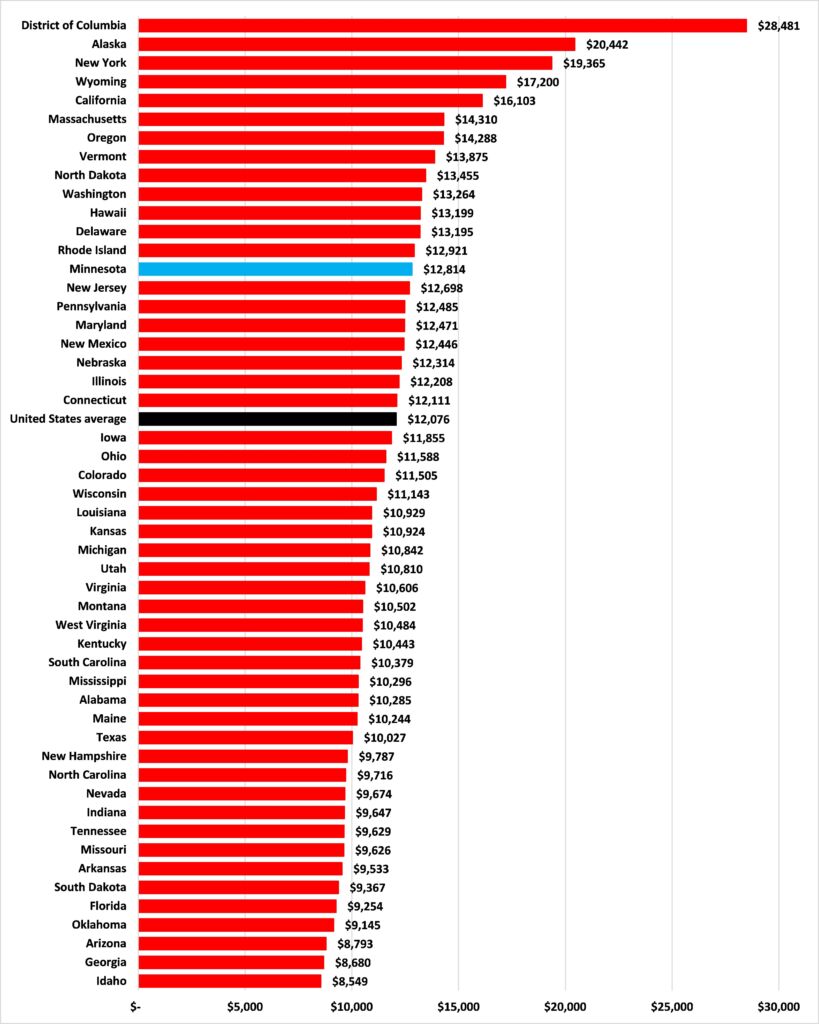The Surplus: Minnesota’s government is already spending more than most other states
On Dec. 7, Minnesota Management and Budget (MMB) released its budget forecast for Fiscal Year 2022-23 which foresaw a $7.746 billion projected surplus. This immediately sparked a debate about what should be done with that money.
For a number of reasons, it should be given back to the people who earned it — ordinary, hard working Minnesotans — via tax cuts.
State government spending is high compared to other states
One reason is that Minnesota’s state government is already spending at historically high levels.
Figure 2 shows direct state and local government expenditure for the fifty states and District of Columbia for 2019. Minnesota ranked 14th in the U.S. on this measure, spending $12,814 per resident. This was above the national average of $12,076. Furthermore, this is nothing new; in the previous two years, Minnesota ranked 13th and 10th for direct state and local government expenditure per capita.
Figure 2: Direct state and local government expenditure per capita, 2019

Other research bears out the fact that Minnesota’s state government spends an above-average amount of money per resident. The Minnesota Center for Fiscal Excellence (MCFE) finds that in 2019, Minnesota ranked 11th among the fifty states and District of Columbia for Total Direct General Expenditures Spending per Household Adjusted for State Price Differences. And again, this was nothing new; MCFE raked Minnesota 10th in 2018, 11th in 2017, and 12th in 2016.
Minnesota’s state government is awash with your cash already. Not only is state government spending higher here than in most other states, it is high compared to its historic record. Those who claim that even more is needed to solve various social ills have to explain why the current avalanche of cash isn’t doing so. The surplus should stay with the people who earned it.